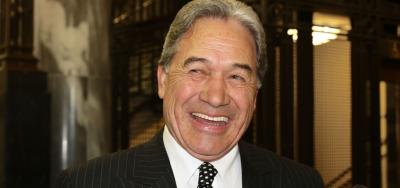But this is Winston Peters, of course, and he’s been here before.
On June 17 (or earlier, if the baby has other plans) Prime Minister Jacinda Ardern will begin six weeks’ maternity leave.
She will hand the keys over to her coalition partner Peters, but not without caveats.
It’s understood Ardern will release more details on today about exactly how the relationship between her and the New Zealand First leader will work while she’s away, and what she expects of her deputy.
For anything major she will still call the shots and will remain involved in decision making, continuing to receive Cabinet papers for some light reading during her time off.
For people joking about Peters going rogue, rest assured that almost certainly won’t happen.
Most decisions are usually made in consultation with Cabinet, which Labour controls.
"In short, New Zealand’s prime minister having a baby in office will be historically significant, but Peters time in charge will not."
Technically Peters has the power to fire ministers or declare a snap election, although the Cabinet Manual declares he should be making decisions in consultation with the actual Prime Minister.
The reality is Peters' time in charge will be business as usual, although the post-Cabinet press conference will likely be slightly spicier.
He is also expected to keep Ardern’s regular Tuesday morning media slots, making his appointment with RNZ’s Guyon Espiner mandatory listening.
But what about the nuts and bolts of how the government machine will work with Winston in charge?
There will be no shift to the ninth floor of the Beehive, with both Peters and his team remaining in their office two floors below.
Staff from Ardern’s office will continue to be the first port of call for media requests, with his existing staff handling enquiries about his current portfolios.
He will continue with his duties in foreign affairs, state-owned enterprises, and racing, while Ardern’s role as Child Poverty and Arts, Culture & Heritage Minister will be assumed by the associate ministers.
In short, New Zealand’s Prime Minister having a baby in office will be historically significant, but Peters time in charge will not.
As Victoria University’s Jim McAloon points out, while Ardern taking six weeks maternity leave is a landmark event, the length of the absence pales in comparison to some of her predecessors.
When Peter Fraser became prime minister in 1940, much of the planet was in the grip of World War II.
During that time he spent significant periods overseas, including a five-month stretch in 1941.
"If the prime minister and deputy prime minister don’t get on, you have a dysfunctional government anyway.”
While he was absent, Walter Nash acted as prime minister and was “grossly overworked”.
By 1948, and after another five-month absence, Nash was “indulging his notorious skill at procrastinating” and a three-day Cabinet meeting was needed to clear all outstanding business.
Continue to the full Neewsroom arrticle by Shane Cowlishaw || May 07, 2018 |||

